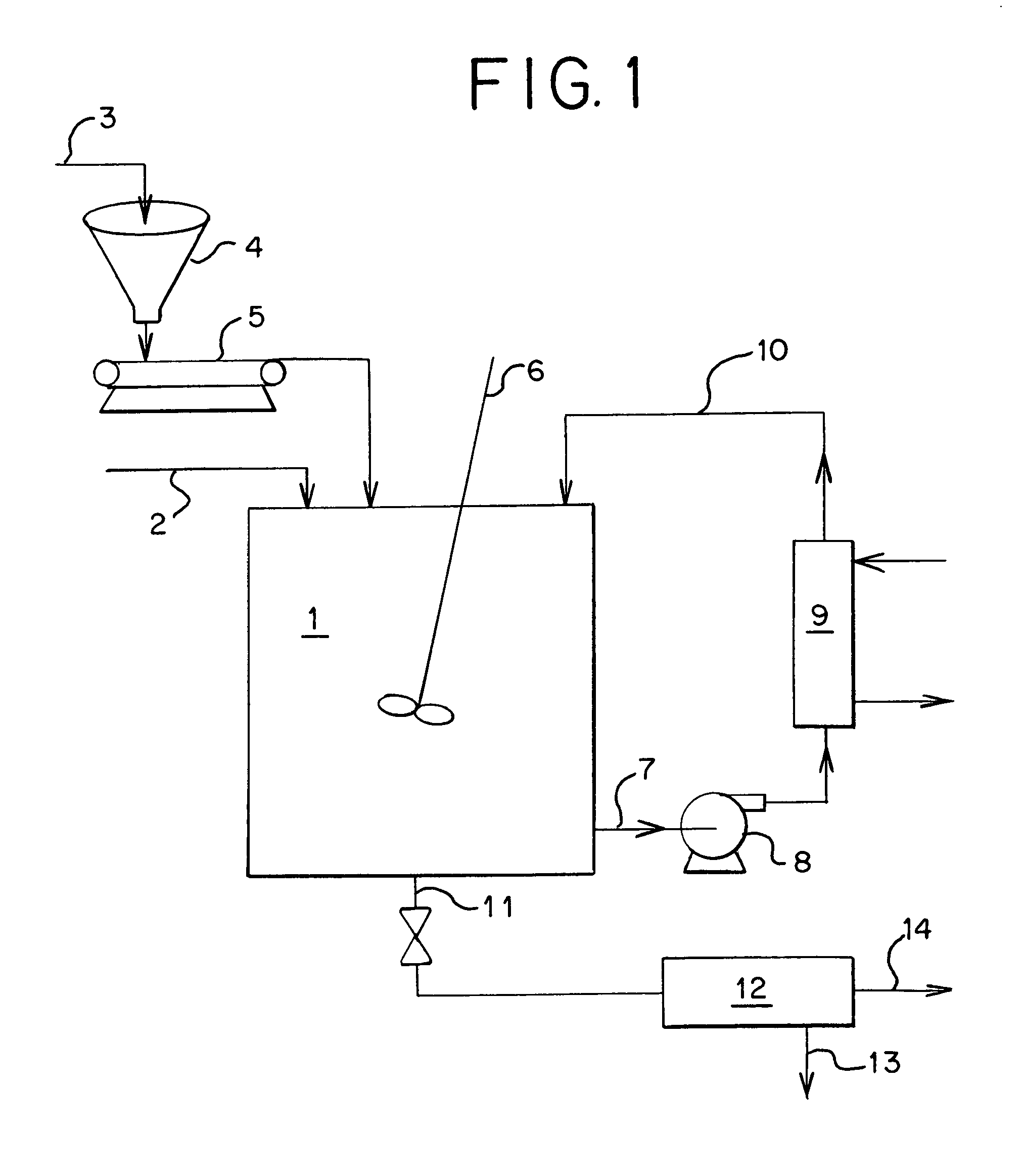Process for recycling waste acid
- Summary
- Abstract
- Description
- Claims
- Application Information
AI Technical Summary
Benefits of technology
Problems solved by technology
Method used
Image
Examples
example
[0018]A waste acid with the following content was processed as described by the invention to produce high quality magnesium sulfate from waste sulfuric acid. Precipitating first ferric hydroxide by the addition of magnesium oxide than continuing to add magnesium oxide until both the soluble iron and the soluble aluminum were co-precipitated removing both inorganic and organic impurities form the resulting magnesium sulfate.
Waste Acid (before treatment):Inorganic Impurities (as parts per million):Cd1,250ppmCr10Cu1,200Mn20Ni1,310Zn10Total Organic Impurities (as Chemical Oxygen Demand)COD1,250ppm
[0019]After iron precipitation followed by co-current aluminum precipitation, the above impurities had been reduced to the following levels:
ImpurityImproved LevelPercent ReductionCd390ppm−68.5% Cr0.0−100%Cu0.0−100%Mn0.0−100%Ni7.0−94.3% Zn0.0−100%Total Organics as COD390−68.5%
[0020]Using the same feed as described above, holding the iron constant and raising the aluminum in solution before prec...
PUM
| Property | Measurement | Unit |
|---|---|---|
| Temperature | aaaaa | aaaaa |
| Acidity | aaaaa | aaaaa |
| Temperature | aaaaa | aaaaa |
Abstract
Description
Claims
Application Information
 Login to View More
Login to View More - R&D
- Intellectual Property
- Life Sciences
- Materials
- Tech Scout
- Unparalleled Data Quality
- Higher Quality Content
- 60% Fewer Hallucinations
Browse by: Latest US Patents, China's latest patents, Technical Efficacy Thesaurus, Application Domain, Technology Topic, Popular Technical Reports.
© 2025 PatSnap. All rights reserved.Legal|Privacy policy|Modern Slavery Act Transparency Statement|Sitemap|About US| Contact US: help@patsnap.com

